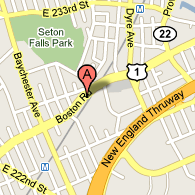New tires: best in front or back?
It’s best to replace tires according to a regular maintenance schedule, and having all four tires replaced at once is best. But sometimes, life gets in the way and for one reason or another, tires aren’t replaced all at once.
When buying tires two at a time, customers often ask if the new tires will perform best in the front or the back. Perhaps surprisingly, in general, the answer is that new tires perform best in the back – even on a front-wheel drive car. It may sound crazy, but it’s true!
Tires with brand new treads, mounted on the front-end, will help with starting traction in snow or other slippery conditions. But in those same types of conditions, having worn tires in the back can cause the rear-end to slide out when maneuvering or stopping. Once the rear wheels begin to slide, the car is much harder to control, increasing the chance of an accident. But since the front wheels can be steered, you have a much better chance of regaining control if the front wheels slide than if the rear wheels slide.
We recommend that you replace all four tires when it’s time to, but if you can’t, put the new tires on the back!
